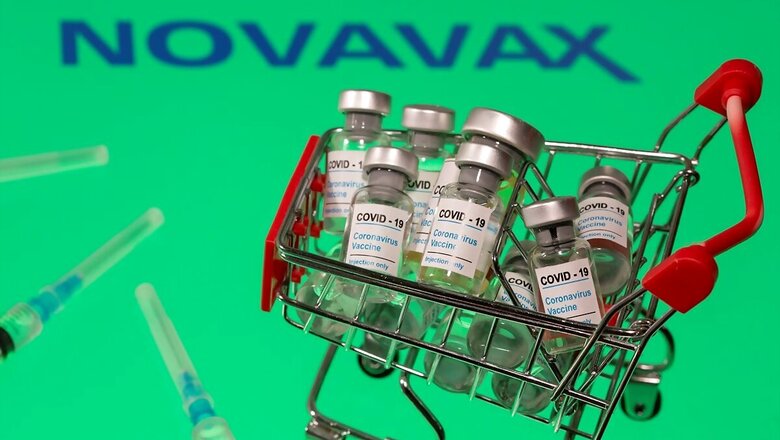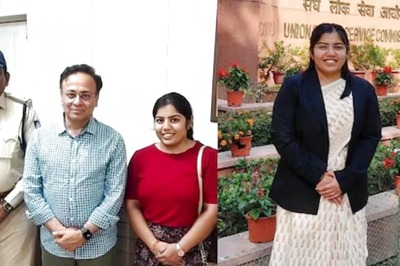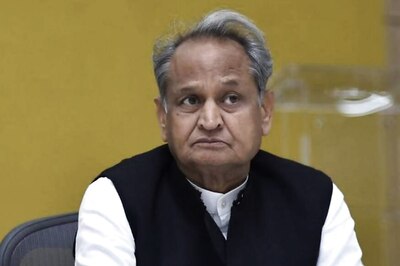
views
As far-fetched as it may seem now, there was a time not far away in the past, when India seemed to have managed access to a comfortably high number of COVID-19 vaccines for its vaccination drive, and Novavax, a Maryland-based biotechnology firm, were to deliver most of these doses. To begin with, India’s initial vaccination strategy was dependent heavily on Serum Institute’s production capacity, and the large licence manufacturing deals the firm had with both Novavax as well as AstraZeneca.
At some point in November 2020, India surprisingly emerged with the highest number of confirmed dose purchases in the world, based on publicly available information at the ‘Launch and Scale Speedometer’, tracking the global vaccination effort. The Duke Global Health Innovation Centre, the curators of the database, observed that primarily through leveraging the country’s own production capacity, India had secured one billion doses of the Nova-vax vaccine (Covovax),half a billion doses of the Oxford-AstraZeneca vaccine (Covishield), and 100 million doses of the Sputnik-V vaccine.
At that point, India had potential access to 1.6 billion doses of COVID-19 vaccines in Phase-3 trials, while the European Union and the US followed closely behind with 1.4 billion doses and 1.01 billion doses respectively. While production of Covishield progressed largely across predicted lines, Novavax’s global as well as India plans ran into rough weather. Novavax started off as one of the strongest contenders among the successful global vaccines, promising the world 2 billion doses in 2021 alone, despite failing to bring to market even a single vaccine candidate in its 34-year-old history. A majority of these doses were to be manufactured at the Serum Institute.
The Evolving Situation
Over the last two months, both the demand as well as the supply situation of COVID-19 vaccines across India has changed dramatically. From a situation where 21.5 million vaccine doses distributed to states by February 1 were administered only by the second week of March, given a lukewarm response emboldened by low infection numbers, steadily increasing case load and mounting death numbers have resulted in an explosion of demand, vaccine shortages and widespread anxiety around vaccine availability.
The perceived production capacity based on claims by manufacturers and numbers on the ground have proven to have a considerable mismatch. Currently, despite a clear decline in the number of vaccine doses administered per day across the country, states are still facing shortages of vaccines in many districts. For the same reason, India needs to be both judicious in the use of vaccines in the short run, and also be very aggressive in securing more doses, be it through purchase deals with current manufacturers, by helping fast track new vaccine development, or through expansion of production capacity.
Given the supply bottlenecks and exponentially increasing global demand, COVID-19 vaccine market from the very beginning had too many dollars chasing too few doses. In addition, the uncertainties in the market and the ever-evolving supply conditions made sure that many countries had to drastically re-adjust their vaccination strategies. An example is Canada, which was widely criticised for being the summit case of “me-first” policy for pre-ordering enough vaccine doses that would have vaccinated its population of 38 million six times over. Cut to May 2021, Canada is struggling, and trying to tide over vaccine unavailability by a stop-gap measure called “one-dose summer”, with just 3.3 per cent of the population fully vaccinated.
India’s initial plan was to vaccinate under one-fourth of its population—300 million—by August. It has managed to fully vaccinate only 3.1 per cent of its population as on May 18. Given the emergency situation, India was forced to prevent Serum Institute from fulfilling its global supply commitments including COVAX, and has redirected all the vaccines being produced in India into its own vaccination drive.
Novavax’s Troubles with Timelines
Success of Pfizer, Moderna and Johnson & Johnson’s vaccine candidates is making Novavax’s delay look worse than it actually is. In addition to delays with Novavax’s trials, there have been other regulatory hurdles as well in coun-tries like Britain and the US, resulting in the company changing its expectations of approvals from April to July. At some point in January, Serum Institute was planning to start at-risk production of Covovax at the rate of 40-50 million doses per month from April. In January this year, according to Adar Poonawalla, the owner of Serum Institute, the vaccine was to be launched by June in India. This was before the company informed the world about the delays and that it would not reach peak production rates until the end of 2021. The earlier target for peak production was mid-2021.
It is reported that shortage of supplies like filters and single-use bags have also contributed to Novavax’s woes. However, irrespective of the uncertainties, Novavax has emerged as a major future contributor to the WHO’s COVAX facility, with a memorandum of understanding in February offering 1.1 billion doses to the developing countries, 750 million of which are to be manufactured by the Serum Institute. Novavax and Serum Institute reportedly planned to initiate delivery of these doses in the July-September quarter of 2021. Interestingly, in the final deal signed in May, it is added that in the event that Serum Institute cannot materially deliver expected vaccine doses to the COVAX Facility, Novavax will do the same.
Activists have observed that the contract between Novavax and Serum Institute had issues of stability and sustainability from the beginning since the technology holder (Novavax) created dependency for the supply of the vaccine component and prevented the licensee (Serum Institute) from independently manufacturing it. Indeed, the restrictions on raw materials by the United States have been a major reason behind Serum Institute’s production delays.
As late as on May 5, Serum Institute started a phase-2/3 observer-blinded, randomised, active-controlled bridging trial for India with 1,600 participants over the age of 18 across 15 centres. The company hoped that they would launch the vaccine in India by September, along with the global launch. The Government of India itself set a mod-erate goal of securing 200 million doses of Covovax by the year-end.
Despite the crushing delays, Novavax/Covovax could still potentially become a key candidate for the COVAX facility as well as the Biden administration’s vaccine diplomacy efforts, given the Serum Institute’s surprising announcement that it will not be able to deliver vaccines to other countries till the end of 2021, given the pandemic situation in India. Novavax’s timelines no longer look too far behind anymore.
Read all the Latest News, Breaking News and Coronavirus News here. Follow us on Facebook, Twitter and Telegram.




















Comments
0 comment